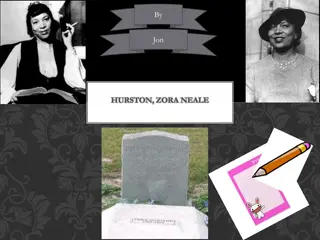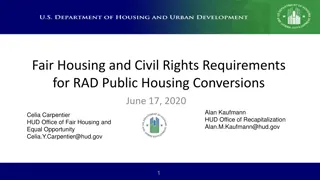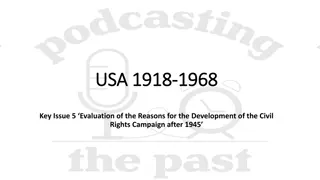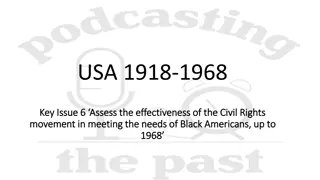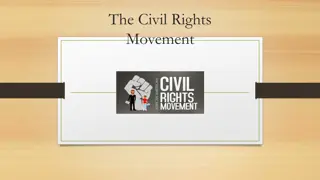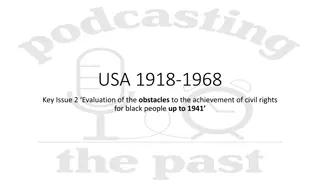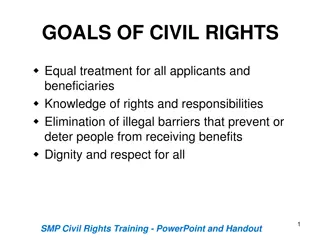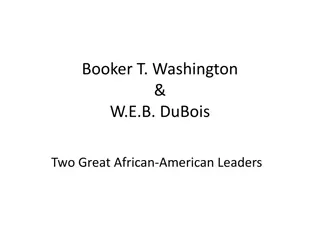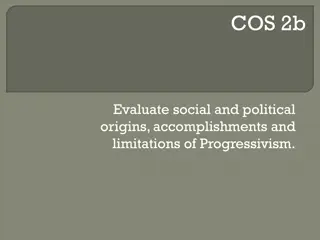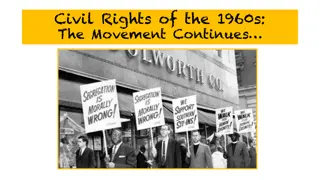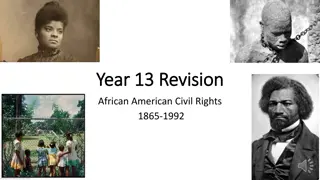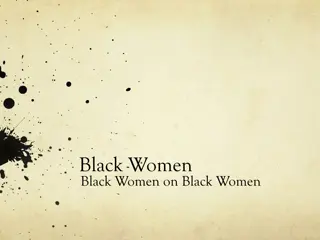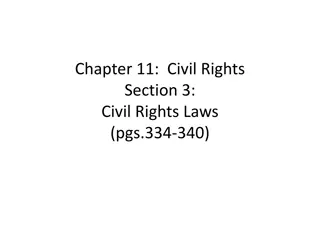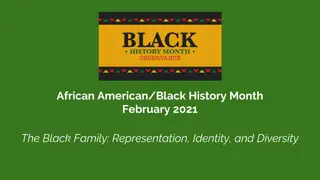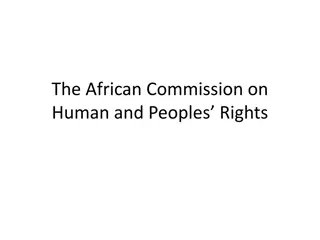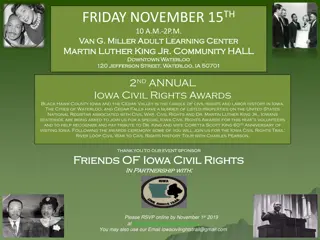The Black Awakening: Challenges and Triumphs in African American Civil Rights Movement
In the early 20th century, influential leaders like Booker T. Washington and W.E.B. Du Bois led the fight for political and civil equality for African Americans. Despite facing obstacles such as segregation and disenfranchisement, groups like the Niagara Movement and NAACP emerged to promote racial integration and equal rights. Strategies and tactics were employed, including protests, literary works, and political involvement. While facing failures and continued racism, the movement laid the foundation for the Civil Rights Movement and saw some social legislation progress.
Download Presentation

Please find below an Image/Link to download the presentation.
The content on the website is provided AS IS for your information and personal use only. It may not be sold, licensed, or shared on other websites without obtaining consent from the author.If you encounter any issues during the download, it is possible that the publisher has removed the file from their server.
You are allowed to download the files provided on this website for personal or commercial use, subject to the condition that they are used lawfully. All files are the property of their respective owners.
The content on the website is provided AS IS for your information and personal use only. It may not be sold, licensed, or shared on other websites without obtaining consent from the author.
E N D
Presentation Transcript
The Black Awakening Courtney, Chris, Jake, Vibha
Problems (Background and Evidence) Influential Leaders Booker T. Washington W. E. B. DE Bois NAACP Formed in 1909 Fought for political and civil equality Southern Progressives wanted to restrict black rights
Goals W. E. B. De Bois Keep African culture, don t assimilate to Americans entirely Led protest in Niagara Falls, for legal segregation (failed) Didn t like BTW because he accepted dominant white society Led NAACP Booker T. Washington Believed segregation wasn t bad/ could live separate, yet together from whites
Strategies/Tactics W. E. B. Du Bois The Philadelphia Negro (1899) The Souls of Black Folk (1903) 1906 Atlanta Race Riot defied the law by arming themselves and smuggling additional weapons into the city through a network of individuals and black organizations across the state African American delegates took over the Republican Party at the state convention in 1880 Victory was short-lived
Groups Involved/Level of Involvement Niagara Movement Organized in 1905 to promote racial integration, civil and political rights, and equal access to economic opportunity NAACP Interracial organization co-founded by W. E. B. Du Bois in 1910 dedicated to restoring African American political and social rights Southern Progressives Racist southerners who wanted economic gain but restrict black rights Afraid of black domination
Obstacles Faced Segregation Discrimination from Whites Referred to as beasts by government officials Disenfranchisement of Black voters
Successes/Failures Still Racist views towards blacks Segregation Niagara Movement failed Du Bois was first black to get a PhD Harlem Renaissance United under a central Cause-Start of Civil Rights Movement Some social legislation was made



